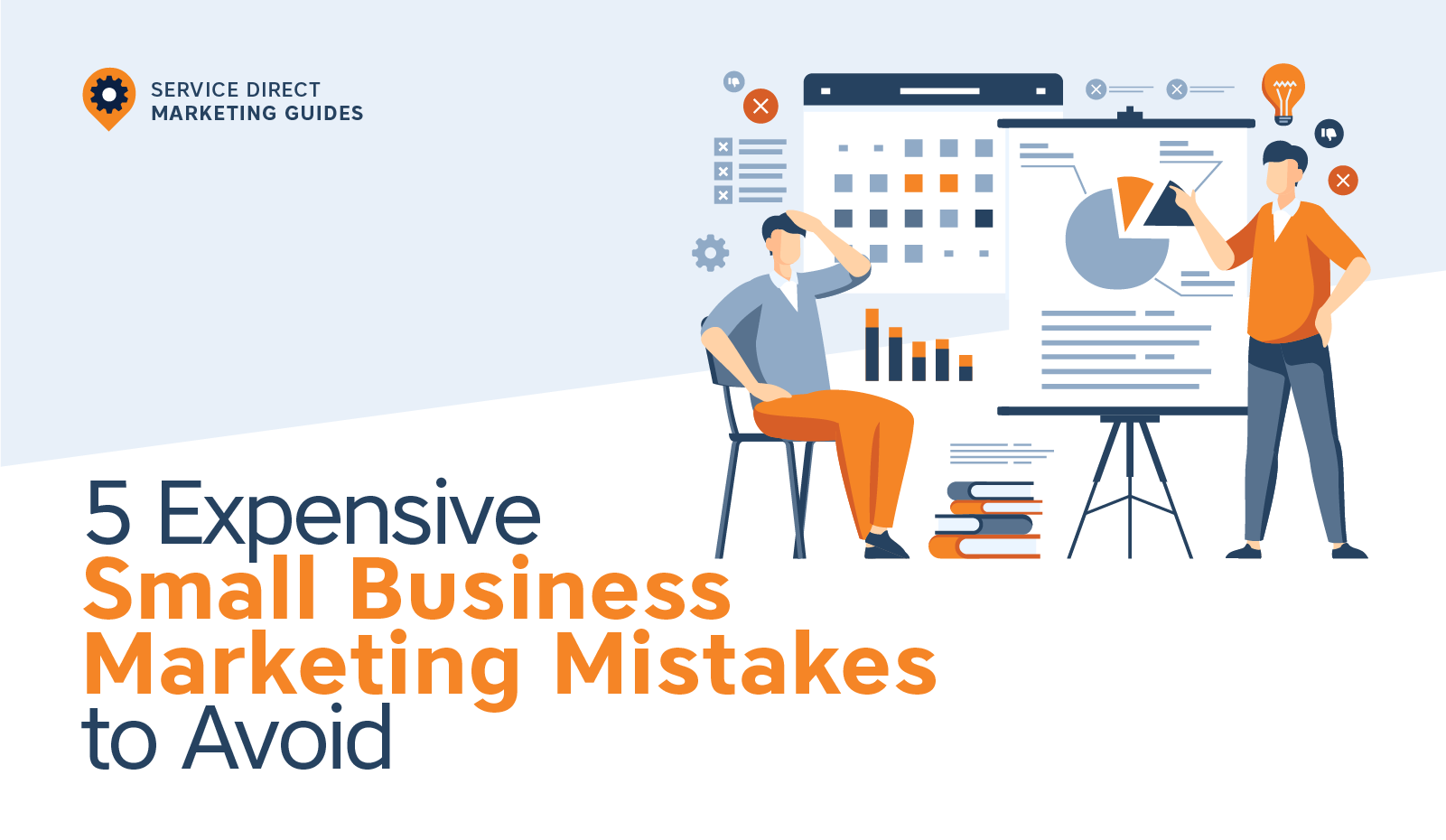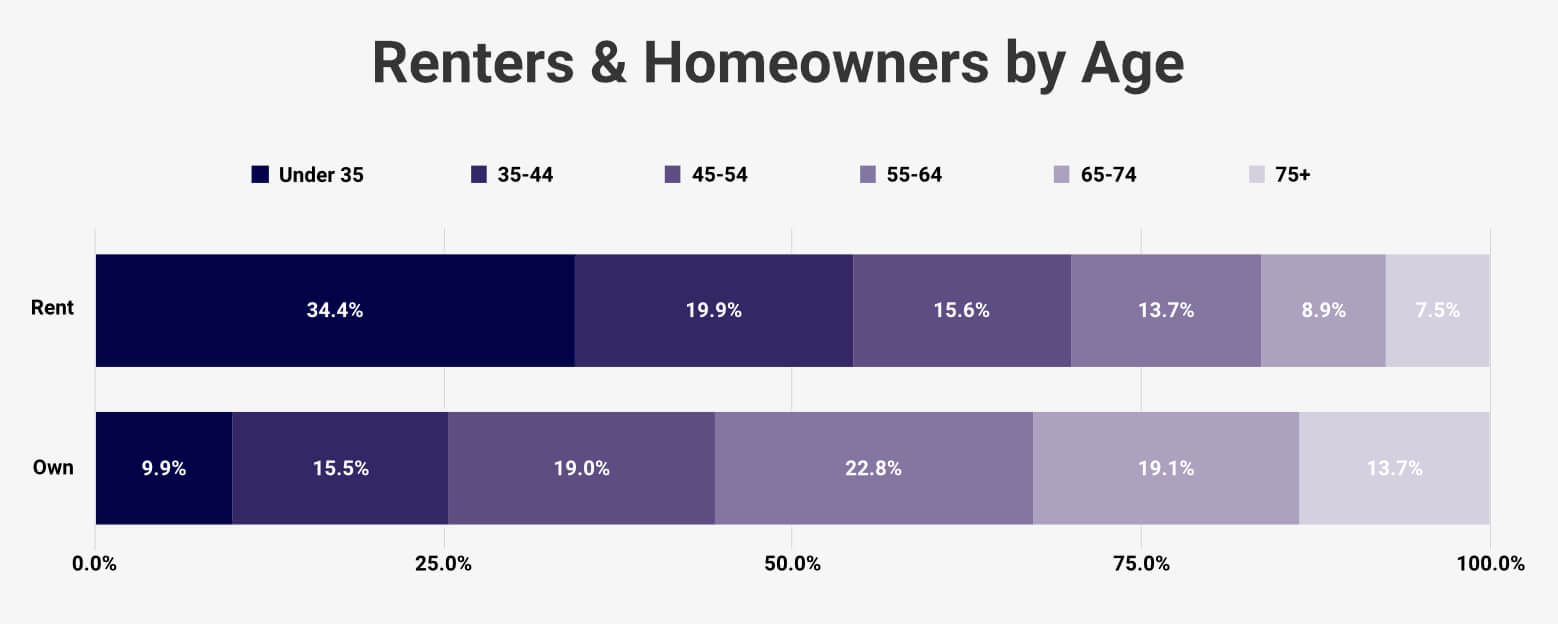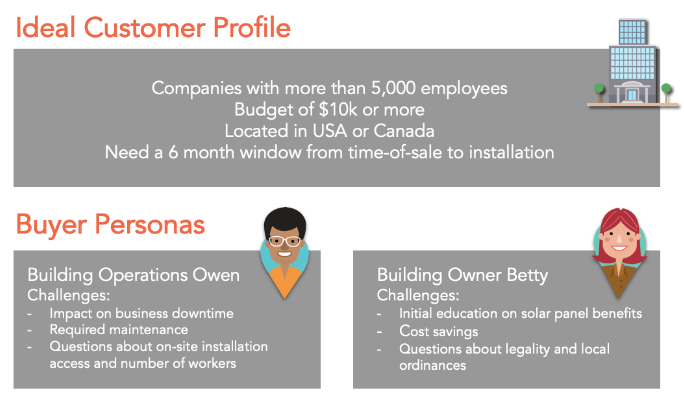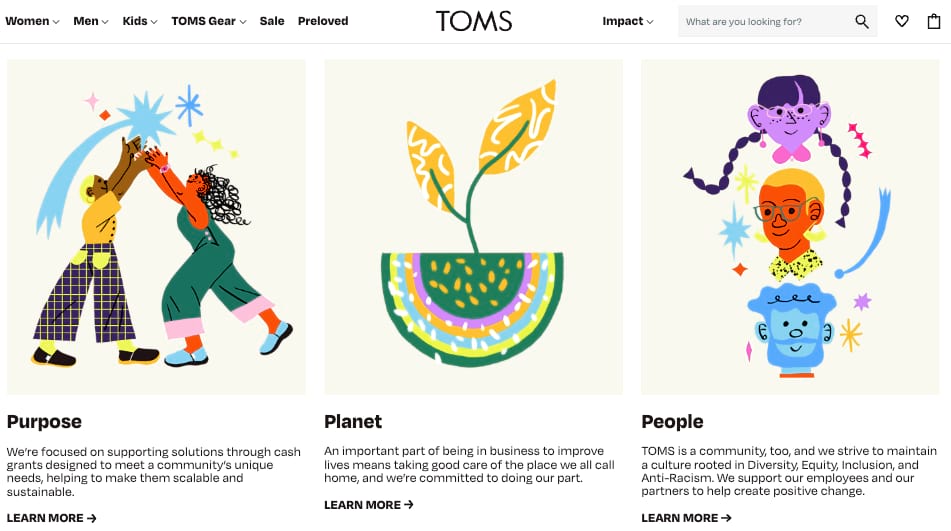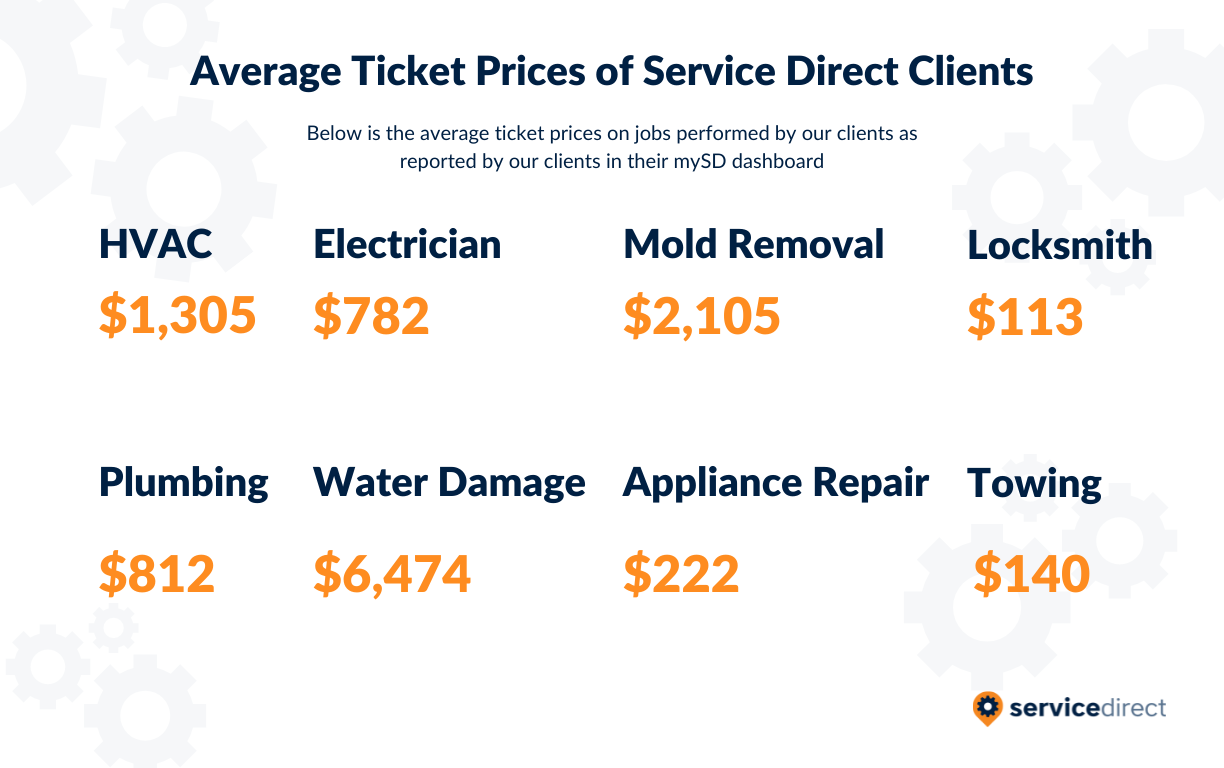5 Expensive Small Business Marketing Mistakes to Avoid
Starting a small business is an exciting venture, but it's also a nerve-wracking one. After all, you're pouring your heart and soul (not to mention your savings account) into bringing your vision to life.
When it comes to marketing your business, it's tempting to go all out and throw everything you've got at it. It's hard not to show off something you're so passionate about.
But beware: not all marketing strategies are created equal. In fact, some can be downright costly. And that's one of the many reasons 20% of startups fail within the first year.
These are the strategies you want to avoid with a ten-foot pole. That's why we've put together this simple guide to help you avoid some of the most expensive small business marketing mistakes.
So grab a notebook, iPad, or your photographic memory, and let's dissect the five most common small business marketing mistakes brands make and how to avoid them in future campaigns.
1. Bad Data
As a small business owner, one of the biggest mistakes you can make in marketing is using bad data. Because, as the saying goes: garbage in, garbage out.
Let's say you run a small bakery and want to promote your business through social media. Without proper research and analysis, you invest most of your marketing budget in TikTok because it's popular among younger audiences.
After running TikTok campaigns for six months, you realize you're not seeing a significant increase in sales or engagement. Meanwhile, your competitors are seeing success on Facebook and Instagram, where they can target their audience more precisely and drive more traffic to their websites.
Had you researched and analyzed your customer data beforehand, you could have determined that there are more effective platforms to reach your target audience. Instead, you could have focused on Facebook and Instagram, targeting your ideal customers by age, location, interests, and other relevant factors.
Now you've wasted six months of time and money on a platform that didn't yield the desired results. And your competition pulled ahead. Sigh.
Solution: From day one, track the key metrics that give you insight into the effectiveness of your marketing campaigns. Some of these metrics include:
- Conversion rate
- Cost per acquisition
- Customer lifetime value
- Return on Ad Spend (ROAS)
- Click-through rate (CTR)
- Engagement rate
- Bounce rate
By tracking these metrics, you can better understand which campaigns generate a positive return on investment (ROI) and adjust your marketing strategy accordingly.
And to take it up a notch, you can conduct a win-loss analysis. This process involves evaluating why deals are won or lost, which sheds valuable light on the effectiveness of your sales process, product offerings, and strategy.
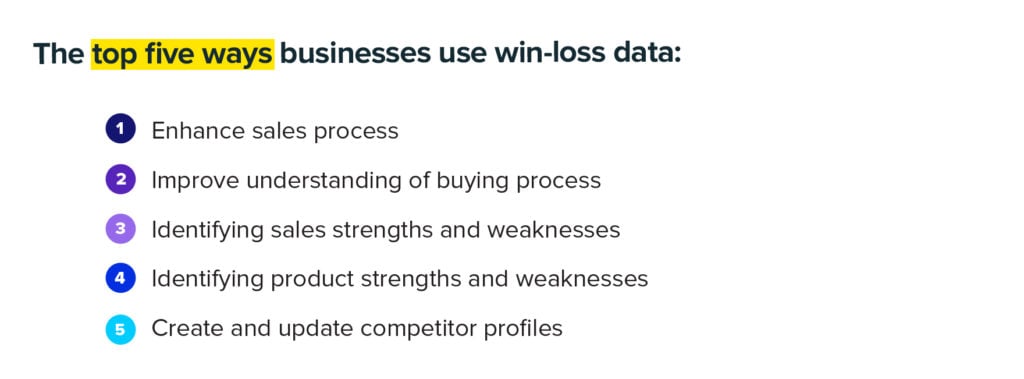
By analyzing why you lost a deal, you can quickly identify areas for improvement. For example, a win-loss analysis may reveal that your pricing is too high compared to competitors or that your sales team needs to be more effective at communicating the value proposition of your products or services.
Armed with this knowledge, you can make targeted improvements to address these issues and increase your chances of closing future deals. And the more deals you close, the more money makes it into your pocket.
Doesn't that sound like music to your ears?
2. Poorly segmented audiences
As a small business owner, you probably have a lot on your plate — from managing your team to overseeing day-to-day operations. It's easy to understand why some small business owners may overlook audience segmentation in their marketing campaigns.
However, failing to segment your audience properly can significantly affect your business's success. Consider this: you own a company that provides home mortgage loans, but you’re targeting young adults under 35 living in big cities.
In this case, your marketing efforts may not produce the intended results, and your sales may suffer as a result of targeting a population and location that's less likely to be in need of or interested in mortgage loans to purchase a home.
Instead, you should target a different group, such as people or couples in their thirties and forties, who are more likely to buy a property. Not only will your marketing campaigns convert more leads, but now you have the opportunity to build relationships and score lifetime customers.
Still not convinced about the power of targeting the right audience? Here are a few more consequences of ignoring audience segmentation:
- Wasted resources: If you're not targeting the right audience, your marketing efforts may fall apart at the seams. The result? Lower engagement and conversion rates. And not to mention a waste of time and money.
- Negative impact on your brand: Customers may perceive your marketing messages as generic or irrelevant if they don't speak to their unique needs and preferences, hurting your brand's credibility and reputation.
- Missed opportunities: You need to properly segment your audience to ensure you're able to target specific groups with personalized marketing messages and gain market share from your competitors.
Solution: Thankfully, there's one simple solution to avoid this marketing catastrophe. That's where a data-driven ideal customer profile (ICP) comes into play.
By analyzing and interpreting your existing customer data, you can identify your ideal customers' characteristics and behavior patterns and tailor your marketing efforts accordingly.
It's like having the answer to a test before you take it. With the help of data-driven ICP, you can identify the most profitable customer segments, understand their needs and preferences, and create personalized marketing campaigns that resonate with them.
By tailoring your marketing campaigns to each segment's unique needs and preferences, you're more likely to attract and engage your target customers, driving higher conversion rates and revenue for your business.
3. Marketing tunnel vision
It's common to get caught up in one marketing strategy and invest all your time and money into it.
But, while it may seem like a good idea to focus investment on what you think will work, putting all of your eggs in one basket is not the best way to ensure success. In fact, it can leave you vulnerable to failure if that strategy doesn't pan out.
Picture it like this: let's say you're focusing all your marketing efforts on a clever email marketing campaign featuring various puns from The Last of Us.
Sure, it's a popular TV show, but what happens if it doesn't resonate with your target audience or the buzz for the show fades? Your marketing efforts could become ineffective over time. And that's not a risk you want to take.
Solution: Start by testing different messaging, offers, or calls to action in your email campaigns, social media posts, or paid advertising. You can also experiment with different channels to see which performs best for your business and target audience.
Once you find the recipe for success, adjust your approach accordingly.
It's also important to avoid investing too much in trendy software or services just because they're popular. Sure, developing a mobile app from the ground up might seem like the way to keep up with larger businesses, but it's not a smart financial decision if the cost isn't sustainable or your customers don't demand it.
The same goes for investing in expensive marketing tools and platforms, such as Citrix. While it may be a popular choice for some businesses, plenty of affordable alternatives to Citrix can help you achieve the same results without breaking the bank.
So, take a step back and evaluate your options carefully. Focus on investments that'll have a positive impact on your bottom line. And remember, diversification is key.
4. Misaligned brand messaging
Every message you send out through your marketing channels, such as social media, advertising, or email marketing, needs to be consistent with your overall brand identity and values.
Using messaging in your marketing that doesn't align with your brand's long-term goals can lead to costly rebranding campaigns in the future.
For example, if your brand claims to be environmentally conscious but uses single-use plastics in its products, you may be seen as hypocritical and misleading. Inconsistency in messaging can erode trust in your brand, ultimately losing credibility and potential customers.
When it comes to branding, don't cut corners. So it's important to develop a brand identity that reflects your values and goals and to ensure that your marketing efforts align with that identity.
Your brand messaging needs to carry through every aspect of your marketing material. From the colors, you choose for your brand packaging to the voiceover style used in your social media videos.
Solution: To avoid misaligned brand messaging, clearly define your brand identity before starting marketing campaigns.
In a few simple steps, you'll have everything you need at your fingertips to make sure that all of your marketing efforts, from social media posts to advertising campaigns, are consistent with your brand's messaging.
Consider incorporating principles from Robert's Rules of Order, such as developing an agenda, to hold well-structured and effective marketing meetings that empower executives to make better marketing decisions.
If you need inspiration for a brand identity, use TOMS as a role model. Since 2006, TOMS has paved the way for social change by donating a pair of shoes for every purchase. That message remains consistent across everything they do.
They even have a transparent terms and conditions agreement that outlines their policies and practices related to sustainability and environmental responsibility.
TOMS goes above and beyond to include honest information about the materials used in the products, the brand's sustainability goals, and any steps taken to minimize environmental impact.
Build trust and credibility with your potential customers by honing in on your brand identity using consistent messaging across all marketing channels.
The result? Better brand loyalty and a greater chance of overcoming objections in sales, ultimately driving more revenue for your business.
5. Not taking advantage of all available resources/channels
Have you found your go-to marketing channel that works, so you stick to it? As the saying goes, if it’s not broken, don’t fix it.
Well, that may be true, but you could also be missing out on potential opportunities for growth. Unfortunately, comfort and growth often don't go hand in hand.
For instance, you might have the most engaging blog on the block, packed full of expert advice and useful tips. But if you're only sharing these insightful posts on your website and ignoring the power of social media or email newsletters, then you're missing out on opportunities to expand your reach.
Think about it, your potential customers are not confined to just one platform. They’re:
- On LinkedIn, learning insight from industry experts
- On Twitter, reading the latest news and trending topics
- On Instagram, looking for inspiration
- On Facebook, connecting with friends
- Checking their emails, perhaps multiple times a day
So why not meet them there?
As we mentioned earlier, avoid marketing tunnel vision by exploring all available resources and channels to secure the best results. That means conducting market research, analyzing customer data, and experimenting with new channels and tactics.
Solution: Don't limit yourself to one channel or one strategy. And that doesn't mean you have to break the bank to do so.
As a small business owner, you should use basic free tools like Google Business Profile, Yelp, and your website to reach customers.
These tools help you share important information about your business, interact with customers through reviews and messages, and make a good first impression online.
In addition to basic free tools, you can also use pay-per-call, pay-per-click, and SEO strategies to reach potential customers.
- Pay-per-call: Place a phone number in an advertisement and pay a fee every time a customer call is delivered to your phone. This is especially effective for businesses that rely on phone calls for conversions, like local service providers.
- Pay-per-click: Pay for ads at the top of search engine results pages and pay a fee every time someone clicks on your ad.
- SEO strategies: Search engine optimization (SEO) involves optimizing your website to appear higher on search engine results pages (SERPs). SEO is a long-term strategy to attract organic traffic to your website. Some tactics include keyword research, content creation, and building backlinks.
Or, if you want to tap into your creative side, consider more advanced options like social media and influencer marketing. Feel free to experiment with different channels and tactics to see what works best for your business.
In Conclusion
So there you have it, fellow small business owners. Marketing is fun, but it's also important to tread carefully, as certain missteps can hit your wallet and stunt your growth.
So dodge those all-too-common blunders, like relying on bad data, targeting the wrong audience, and underestimating the power of a diverse strategy. Doing so will boost your return on investment and set the stage for lasting success.
Remember, learning from these expensive lessons and crafting well-thought-out marketing strategies can keep your precious resources intact and help your brand shine, reel in new customers, and flourish in a cutthroat market.
To your success!
 About the author
About the author
Mike Bandar is an award-winning UK-based entrepreneur. A Founding Partner of Turn Partners, the startup studio focused on the acquisition, turnaround, or creation of digital businesses. Through Turn Partners, Mike co-founded Hopper HQ the Instagram planning and scheduling tool, working with thousands of influencers, brands, and agencies around the world.

